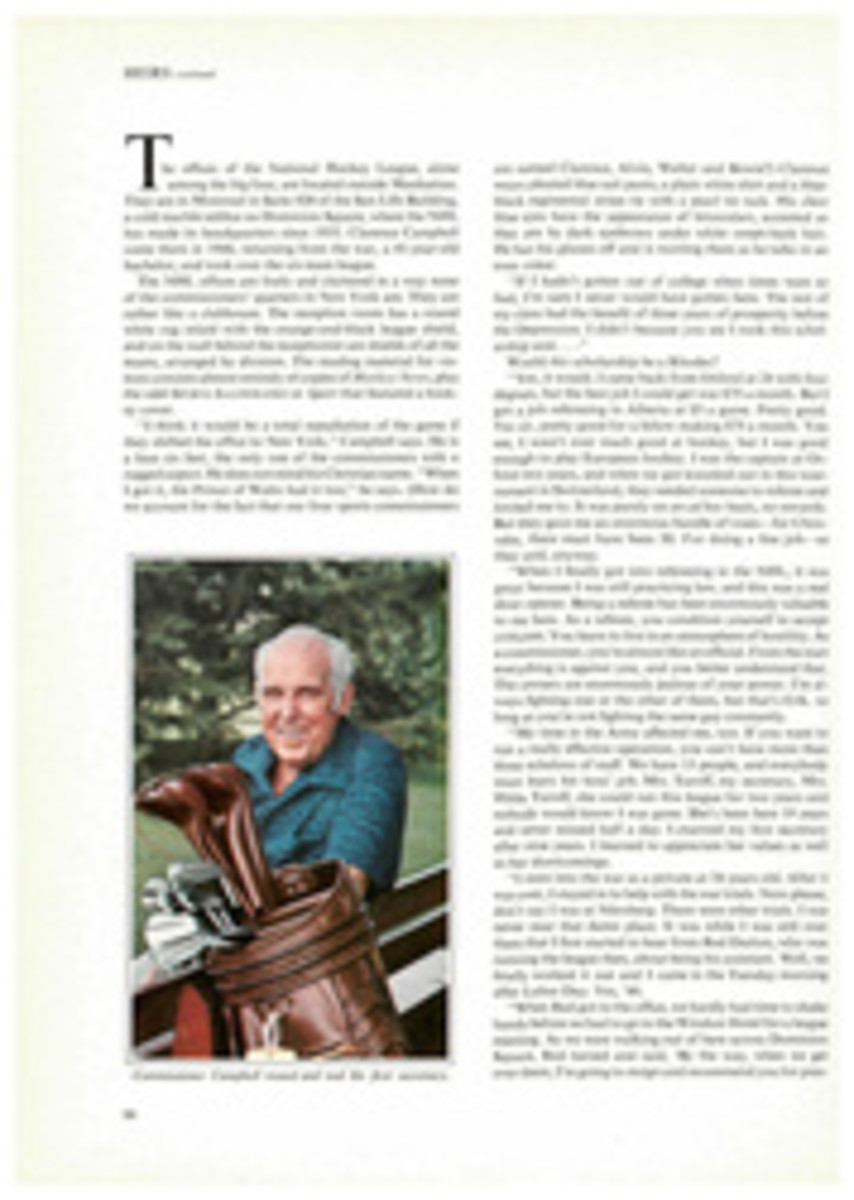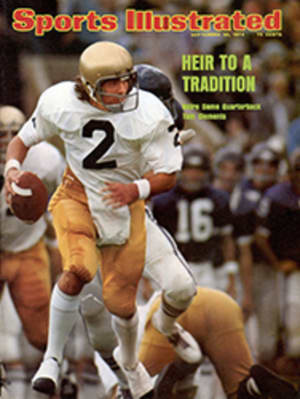
Can anyone win the mug?
When Courageous crossed the finish line off Newport with the Australian challenger Southern Cross far astern, the gun heralding her victory might also have sounded the end of an era. For the 22nd time in 123 years a foreign invasion was defeated, this one the most meticulously organized and lavishly financed in history, raising once more the question: Can the America's Cup ever be lifted? If not, what is the reason for the U.S. invincibility? And, finally, in these days of soaring costs, will anyone ever have the temerity to try again in yachts that are magnificent racing machines but useless baubles when their moment of glory is over?
Southern Cross had arrived with unprecedented fanfare, partly because of her owner's penchant for publicity, partly because she was accompanied by a trial horse, Gretel II, which in 1970 most observers conceded to be faster than the defender, Intrepid. Reports from Down Under indicated that Southern Cross was a distinct improvement, and it also seemed that the organizer of the challenge, Alan Bond, a dynamic entrepreneur whose qualifications included considerable success in ocean racing, was going to avoid the mistakes of his Australian predecessor, Sir Frank Packer.
Nothing happened to dispel the aura the Aussies had woven around their challenger while the American trials to select a defender were in progress. Southern Cross went impressively about her practice matches with Gretel II and then polished off the other overseas contender, France, in four straight races. Looking sleek and efficient, she occasionally fell in behind or off to the side of Courageous or Intrepid and seemed very competitive. But when the defender was chosen and the two met, an old dictum again proved valid: it is absolutely impossible to tell how any two 12-meter yachts will fare until they meet in a match race.
The first two confrontations took place in generally light and fluky winds, conditions that made it possible the outcome was influenced by factors other than crew skill or boat speed. But race No. 3 was the true test both sides had been awaiting. In a clear, sparkling nor'wester Courageous led at the start and steadily increased her margin to 5:27 at the finish. On only one leg did Southern Cross gain; Courageous reveled in the windward work, while Southern Cross hobbyhorsed noticeably more, throwing spray and getting nowhere. This made the outcome of the fourth race a foregone conclusion when U.S. starting specialist Dennis Conner put the Cross in his wake by 20 seconds. At the finish the margin had widened to 7:19. Of 24 legs sailed, Southern Cross had managed to go faster through the water on only three—two reaches and a run—for a total gain of 26 seconds out of an overall deficit of 18:51.
Obviously, Southern Cross' principal deficiency was boat speed. In 1970 the Aussies also made tactical mistakes, but each time Helmsman Bill Ficker on Intrepid looked astern he would find that Gretel II had again closed the gap to be on his tail. Thus, as George Hinman commented after his experience with Mariner this year, "No amount of organizational effort, crew skill or sails can overcome the handicap of a hull which can't be driven fast enough."
It is frequently asked why naval architects come up with noncompetitive boats. Perhaps the best answer is that design is neither a science nor an art. Bob Miller, the designer of Southern Cross, belongs to the intuitive school, trusting neither tank tests nor computers, while Brit Chance, who produced Mariner, went the other way—and in fairness to him, tank tests indicated he had achieved a super Twelve. Olin Stephens, the designer of Courageous and Intrepid, combines both approaches. Although generally conceded to be the world's foremost expert in analyzing tank data, he still scrutinizes the results with the eye of an artist and a seaman. Perhaps, in the final analysis, it is Stephens, the quiet man with the pencil, who is the hidden factor in America's supremacy. As far back as 1958, after Columbia had so decisively defeated Sceptre, a foreign competitor remarked, "No one will ever take away the cup so long as Olin Stephens is around."
Combined with design is the American dedication to a project. No outsider can conceive the amount of plain hard work and attention to detail that goes into a 12-meter yacht, or the technological background required: metallurgy, synthetics, sophisticated methods of fabrication and, recently, electronics. Then, after the boat is launched, begins crew drill as tough as any in sport. For many months practice sessions continue from early morning until dusk, until the 11-man team reacts almost automatically when the trials to select a defender begin. The trials themselves are another reason for American superiority. Almost invariably there is a close battle down to the wire, with the victor honed to a razor edge. Along with unsung winch grinders, credit also should go to the oft-maligned New York Yacht Club, whose members give unstintingly of time and money, yet are frequently derided for their dedication in protecting the cup.
This year Courageous' glory must in part be shared with Intrepid, her nip-and-tuck rival in the trials. Had Californian Gerry Driscoll and his organization not brought the supposedly outbuilt defender of 1967 and '70 East and pushed her newer sister to the limit, Southern Cross would have stood a better chance. Courageous syndicate head Bob McCullough said, "We felt we went into this series at maybe 98% efficiency, yet in every race Courageous improved, so we really don't know what might be the limit of her potential." Certainly Skipper Ted Hood, after taking over only on the final day of the final trials, seemed more in the groove with each race. Tactically, Courageous made almost no mistakes when the pressure mounted.
So now, whither the cup? It seems almost certain that Courageous does mark the end of an era. Lack of a self-bailing cockpit, numerous deck openings and placement of winches below render the current crop of Twelves unseaworthy, as well as making it impossible to convert them to a useful later life. Already Stephens and Chance have been requested to undertake a study of possible alternatives, and McCullough, who is not only closely involved with the class but the upcoming commodore of the NYYC, pubicly spoke of alternative solutions: first, a return to the less extreme 12-meters of an earlier vintage, say 1964, the year of Constellation and American Eagle. The latter proved the basic seaworthiness of the type after being converted to an ocean racer. The other possibility would be a switch to the International Offshore Rule. This could produce yachts like the highly successful Running Tide, not dissimilar to the Twelves, but beefed up for offshore work and providing accommodations for racing and cruising.
Because the America's Cup is a trophy unique in yachting, I hope it will continue to be raced for by unique boats, under unique circumstances. The oceans are full of craft built to the IOR, and there are many established events open to them. But there is only one event for which yachts are specially constructed, representing an ultimate that the competing nations can produce, then raced round the buoys boat against boat in a best-of-seven-races series. To use offshore designs in the relatively sheltered waters near Newport would change the character of the competition, and to race for the America's Cup over an ocean course would end its prestige. Thus, I hope the lovely sleek Twelves can continue as a class, albeit modified somewhat in the interests of practicality. Should no challenge be forthcoming after a reasonable time, the New York Yacht Club might find a change necessary to keep cup racing alive, just as requirements which predicated the mighty prewar J boats were scaled down to permit racing with Twelves. Otherwise it might be better simply to retire the cup, an admission that an era and a way of life were finished.
But that day apparently has not yet arrived. In Newport last week was John Livingston, formerly of Australia but now living in England, clutching a model of Kurrewa VI and eager to have a go at the Ould Mug. His Kurrewa V was eliminated during trials against the eventual challenger, Sovereign, in '64, but his case of cup fever rages unabated. Tank tests have been under way for three years, and Livingston intends to build a six-meter version for a half-size check as soon as his challenge is accepted. So, having survived wars, depressions and rising costs for more than a century, the cup continues viable, but it may be a long time before an invader finds the right wrench to unbolt it from its table in the New York Yacht Club.

